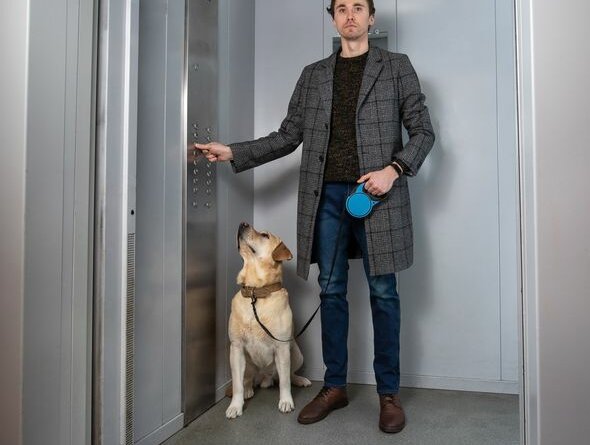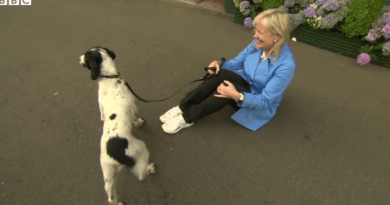Elevate Your Etiquette: Dogs in Elevators
How we choose to live with dogs in our own homes is our business. But when we step out the front door with our dogs, we have a social responsibility to make sure our love of dogs doesn’t interfere with other people’s ability to safely and comfortably navigate their day. This is where practicing good dog-owner etiquette is important.
One etiquette item that recently came to our attention is dogs in elevators. This is most commonly an issue in multi-level, apartment-style housing, but even if you live in a single-family dwelling, if you travel with your dog, you’ll likely encounter elevators in hotels and parking structures.
Tips for navigating elevators with your dog:
- Pick her up. If your dog is small enough, simply pick her up and hold her during the ascent or descent. This ensures she won’t accidentally get jostled or stepped on and if you’re riding with someone who is uncomfortable around dogs, can assuage their concern. If your small dog is worried about crossing the threshold, pick her up before you step onto the elevator to prevent hesitation that could become dangerous.
- Shorten the leash. Make it impossible for your dog to bound ahead of you onto the elevator or wander to the opposite corner in search of a new human friend. If all parties are agreeable to the interaction, invite your dog to, “Go say ‘Hi’” once you’ve exited the elevator. A shorter also leash helps ensure you and your dog enter the elevator together, mitigating the potential danger of your dog being left behind outside a closed elevator door. (It happens!) And, please, no retractable leashes on or around elevators!
- Give your dog direction. Enter the elevator, step to your preferred area and give your dog something to do, like, “Sit, stay,” or “Wait.” Reinforce appropriately with calm praise, petting and, even a treat – especially if you don’t often experience elevators.
- Manage your dog with food. If your dog struggles to comply with your request to “sit” and “stay,” an easier option might be to simply keep your dog in one position (out of the personal space of others) by using a food magnet on his nose. Keep your dog’s attention on you with a handful of food, allowing a piece to escape from your hand every few seconds.
You may wish to train for better elevator behavior, but an elevator full of people is not where your best training will take place. Some situations are best served with management until we can create a better picture for effective training.
- Body-block your dog. Another tip to help your dog “mind his business” on the elevator is to step to a corner with your dog and position your body to block his access to others in the space. I’ll often pair this with a light-hearted monologue where I say something to my dog like, “Yes, I know you want to go visit that person, but not everyone wants to say, ‘Hi’ to you today!” I never know for sure, but my hope is it helps others realize I have control of the situation and we’re no threat.
Your dog’s safety is your responsibility
However you decide to handle elevator encounters, remember it’s your responsibility to make sure your dog is not a nuisance to others. A string of apologies as your dog excitedly jumps on your Wall St. neighbor as he departs for his day on the trading floor doesn’t count for much when he now must rid his suit of dog hair.
People are more likely to remember their unpleasant encounters with dogs – be it on an elevator or the patio of a restaurant. As dog lovers, our best defense against the proliferation of “no dogs” rules is by striving to be the most socially conscious dog owners we can be so the naysayers don’t have anything to complain about!
Elevator Safety for Dogs
The two biggest dangers to dogs posed by elevators are the gap between the floor of the building and the floor of the elevator, and getting left on one side of the closing elevator door with their handler on the other. Stepping in and out of the elevator with your dog calls for the utmost in situational awareness! To prevent potential harm to your dog as you negotiate this danger zone, employ the following safety tips:
- Practice getting in and out of the elevator when there is no other elevator traffic to make sure your dog feels comfortable stepping across the gap and entering the elevator. A dog who balks and has to be pulled inside or scrambles across the gap is at greater risk of having a paw slip into the gap or getting separated.
- Pay close attention to your dog at all times in or near elevators. It may feel strange to fail to make eye contact with one of your fellow passengers as you verbally greet them, but you need to keep your eyes on your dog, making sure he’s comfortable throughout his ride.





